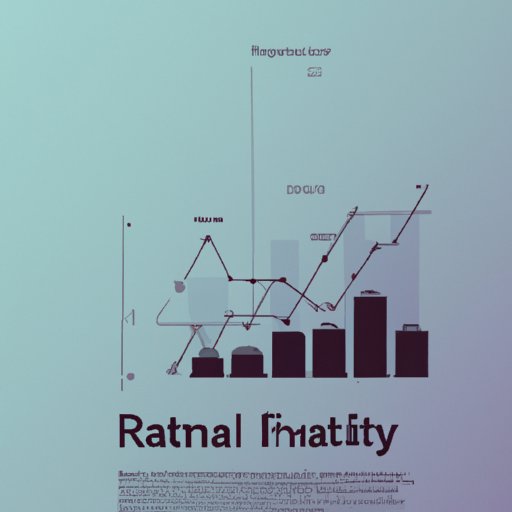Introduction
Financial ratio analysis is a method used by investors and analysts to evaluate a company’s financial performance. This process involves comparing various financial metrics, such as earnings, profits, and liabilities, against other numbers found in the company’s financial statements. Financial ratio analysis can provide insight into a company’s overall financial health and help determine whether it is a viable investment opportunity.
The benefits of financial ratio analysis are numerous. It can help identify potential problems or areas for improvement, assess risk and return associated with investments, and inform strategic decision-making. By understanding the meaning and implications of different financial ratios, companies can use financial ratio analysis to make more informed decisions about their finances and operations.
Key Financial Ratios
Financial ratios can be divided into three main categories: liquidity ratios, profitability ratios, and leverage ratios. Each type of ratio provides a different perspective on a company’s financial situation.
Liquidity Ratios
Liquidity ratios measure a company’s ability to pay short-term obligations. Common liquidity ratios include the current ratio, which measures current assets against current liabilities, and the quick ratio, which measures liquid assets against current liabilities. These ratios provide insight into a company’s short-term financial health, and can indicate whether it has sufficient cash flow to meet its immediate needs.
Profitability Ratios
Profitability ratios measure a company’s ability to generate profits. Common profitability ratios include the gross profit margin, which measures total revenue minus cost of goods sold, and the net profit margin, which measures total revenue minus all expenses. These ratios provide insight into a company’s overall efficiency and ability to generate profits.
Leverage Ratios
Leverage ratios measure a company’s debt-to-equity ratio. Common leverage ratios include the debt-to-assets ratio, which measures total liabilities against total assets, and the debt-to-equity ratio, which measures total liabilities against total equity. These ratios provide insight into how much debt a company is carrying relative to its assets and equity, and can be used to assess the company’s financial risk.
Identifying Problems and Areas for Improvement
Financial ratio analysis can be used to identify potential problems or areas for improvement within a company. By analyzing trends over time, companies can get an indication of how their financial performance is changing and take steps to address any issues. Additionally, by comparing their ratios against industry averages or competitors, companies can identify areas where they may need to improve.
For example, a company may compare its current ratio to the industry average and find that it is lower than the average. This could indicate that the company may not have enough liquidity to meet its short-term obligations, and should take steps to improve its liquidity position. Similarly, a company may compare its gross profit margin to the industry average and find that it is lower than the average. This could indicate that the company needs to focus on improving its operational efficiency in order to increase its profitability.
Strategic Decision Making
Financial ratio analysis can also be used to inform strategic decision-making. By assessing risk and return associated with investments, companies can make more informed decisions about where to allocate their resources. Additionally, by evaluating investment opportunities, companies can determine which investments are likely to yield the highest returns. Finally, by setting goals and objectives, companies can create plans for achieving their desired financial outcomes.
For example, a company may use financial ratio analysis to assess the risk and return associated with investing in a particular stock. By comparing the stock’s price-earnings ratio to the industry average, the company can get an indication of the stock’s expected return relative to the risk associated with it. This can help the company decide whether or not to invest in the stock. Additionally, by setting goals and objectives, the company can create a plan for achieving its desired financial outcomes.
Conclusion
In conclusion, financial ratio analysis is an important tool for companies seeking to understand their financial performance and make more informed decisions about their finances and operations. By analyzing key financial ratios, identifying potential problems and areas for improvement, and assessing risk and return associated with investments, companies can use financial ratio analysis to inform their strategic decision-making and achieve their desired financial outcomes.
(Note: Is this article not meeting your expectations? Do you have knowledge or insights to share? Unlock new opportunities and expand your reach by joining our authors team. Click Registration to join us and share your expertise with our readers.)
